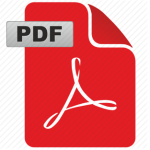
 Download this article as a pdf. (In Spanish)
Download this article as a pdf. (In Spanish)
Please do not print multiple copies of this leaflet as we are a small charity and leaflet sales support our work.
Why express?
A breastfeeding counsellor will be able to discuss your particular situation with you.
Can I hire a pump?
Only hospital-grade electric pumps are available for hire. They can be hired from pump agents around the country or can be dispatched quickly online, often arriving the next working day. If your baby is in special care, then you may be able to obtain a pump from the hospital.
Should I sterilise the equipment?
When storing and expressing breastmilk, everything coming into contact with the milk should be sterilised before first use. If you’re storing milk for your own healthy baby, you might choose to sterilise the equipment each time for extra protection, but research suggests a wash with hot soapy water is sufficient. Some pumps parts can be washed in a dishwasher.
We know breast milk can be stored at room temperature for several hours, and in the fridge for several days, so some mums who are pumping frequently do choose to reuse the pump without washing, and then wash it carefully after several sessions. This isn’t an area where there is a lot of research and you can discuss your options with a breastfeeding counsellor or lactation consultant.
How should I express?
You can express by hand or use a manual or electric breast pump. There’s a first time for everyone when it comes to expressing, so don’t feel upset or put off if only a few drops come out at first.
By hand:
Massage your breast in a circular manner. You can roll the nipple to optimize oxytocin release (the hormone needed for milk flow to start). Have something clean ready to collect your milk in. Something with a wide opening, such as a bowl or jug, can make it easier to catch every drop.
Find where you need to put your fingers to express most effectively. This is usually a few centimetres back from the nipple, but everyone is different. Cup the breast and make a ‘C’ shape with your thumb on one side and some fingers on the other. Compress the breast tissue. It may help to think: “press back, bring together, press forward”. Release and repeat. Then rotate the fingers around the areola to express a new area when the milk flow subsides. There are lots of online videos on hand expression that might help you get started. Instructions may be different if you are expressing colostrum in the very early days so speak with your midwife or breastfeeding supporter.
By pump:
Pumps create a vacuum to remove milk. Make sure the funnel isn’t too small, nor too large, as this could damage the nipple and reduce your milk flow. Some manufacturers can provide alternative sizes. Pumping shouldn’t be painful nor leave a mark on your breast.
lf you’re expressing to increase your supply; shorter more frequent pumping sessions are more likely to increase supply than a few long sessions. ‘Hands on pumping’ can help to increase output by nearly 50%. You can start with breast massage, continue to massage and compress your breasts while you use the pump, and finish with some hand expression. Some people use an adapted bra or crop top to hold the pump in place.
Electric pumps can lose effectiveness over time and may need servicing after heavy use. Many personal grade pumps are not suitable to be shared with someone else as milk can enter the mechanism of the pump and not all pumps are designed to be used more than once or twice a day.
Using Expressed Breastmilk (EBM)
Depending on age and health, your baby may be fed EBM in several ways: by cup, spoon, beaker, syringe or tube.
If you are using a bottle, consider using ‘paced’ feeding which may reduce confusion for the baby around the different skills needed to breast and bottle feed, and help prevent overfeeding. You may also see it called ‘responsive bottle feeding’. Babies can overfeed from a bottle even when only breastmilk is used.
Any other tips?
How can I store breast milk?
These storage guidelines are suitable for a healthy term born baby.
Different storage times may be needed for sick infants or donated milk.
Fridge thermometers can be bought from kitchen shops.
When transporting frozen EBM in a cold box, check the cool blocks are newly frozen and refrozen regularly.
Refrigerate your milk in a sealed container as soon as possible. Store in small quantities so there is less waste and it’s quicker to thaw or warm. It’s possible to collect together milk from a number of expressing sessions but allow each batch to cool before adding it to the sealed container.
How do I defrost breastmilk?
It is possible to defrost milk in a number of different ways, either slowly in a fridge or with the container in contact with warm water. It is not recommended to defrost breastmilk in a microwave.
Gently shake the milk before use as the fats may have separated. It is a myth that you will damage the proteins in the milk with vigorous shaking, but you may cause air bubbles to form in the milk.